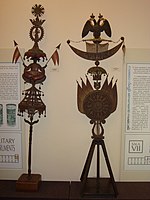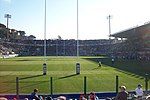Accademia Nazionale di Santa Cecilia
The Accademia Nazionale di Santa Cecilia (English: National Academy of St Cecilia) is one of the oldest musical institutions in the world, founded by the papal bull Ratione congruit, issued by Sixtus V in 1585, which invoked two saints prominent in Western musical history: Gregory the Great, for whom the Gregorian chant is named, and Saint Cecilia, the patron saint of music. Since 2005 it has been headquartered at the Renzo Piano designed Parco della Musica in Rome. It was founded as a "congregation", or "confraternity", and over the centuries has grown from a forum for local musicians and composers to an internationally acclaimed academy active in music scholarship (with 100 prominent music scholars forming the body of the Accademia), music education (in its role as a conservatory) and performance (with an active choir and a symphony orchestra, the Orchestra dell'Accademia Nazionale di Santa Cecilia). The category of alumni of the associated conservatory (which in 1919 succeeded a liceo) includes many noted composers and performers.
Excerpt from the Wikipedia article Accademia Nazionale di Santa Cecilia (License: CC BY-SA 3.0, Authors).Accademia Nazionale di Santa Cecilia
Viale Pietro de Coubertin, Rome Parioli
Geographical coordinates (GPS) Address Website Nearby Places Show on map
Geographical coordinates (GPS)
| Latitude | Longitude |
|---|---|
| N 41.928888888889 ° | E 12.474444444444 ° |
Address
Auditorium Parco della Musica (Parco della Musica)
Viale Pietro de Coubertin 30
00196 Rome, Parioli
Lazio, Italy
Open on Google Maps










